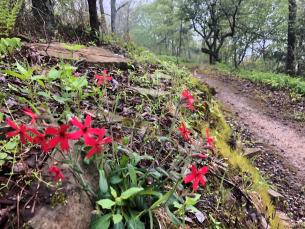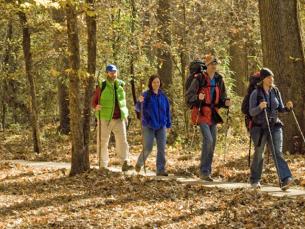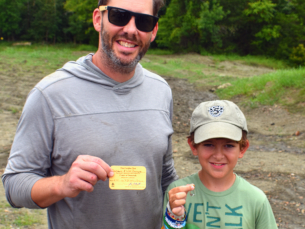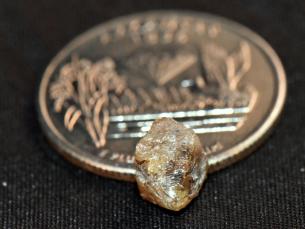Archeology at Plum Bayou Mounds
By: Monika RuedA National Historic Landmark, the Plum Bayou Mounds site comprises one of the largest and most impressive archeological sites in the Lower Mississippi River Valley. Preserved at Plum Bayou Mounds Archeological State Park in Scott, Ark., are Arkansas’s tallest American Indian mounds.
Three mounds remain where 18 once stood surrounded by an earthen embankment eight to 10 feet in height, a portion of which is still visible today.
These ancient earthworks are the remains of the late-Woodland through early-Mississippian Period ceremonial and governmental complex, which was inhabited here from A.D. 650 to 1050. The Plum Bayou Mounds site was the religious, social, and political center for people of the Plum Bayou culture of central Arkansas.
Dr. Elizabeth Horton is an archeologist with the Arkansas Archeological Survey, a unit of the University of Arkansas system, stationed at Plum Bayou Mounds Archeological State Park.
Horton’s specialty within archeology is paleoethnobotany. “Which means I study the use of prehistoric use of plants and the ways in which people were utilizing, cultivating, growing, interacting with, using, and…it’s a big broad field of study. But it’s essentially how people were using plants in the past,” Horton says.
For example, in her cabinet, she has a couple boxes of quinoa sitting on the shelf. “And this is because quinoa is actually a relative of a very important plant that we see in the archeological record in the Southeast and that’s chenopodium berlandieri,” Dr. Horton says. “So I have some samples of the chenopodium berlandieri seeds that have come from the Plum Bayou Garden this past year. Chenopodium berlandieri was a plant that was domesticated by peoples here in the southeast and mid-south beginning about 4,500 or 5,000 years ago. One of the things that is really interesting about Arkansas and one of the reasons why I’m here as a paleoethnobotanist and why I’m working in this state is that we are a part of one of only a handful, there’s about 10, of what we call centers of domestication across the globe.”
One of the many unique things about this park is the Plum Bayou Garden created on site. Horton says one of the really interesting things about having this garden at the park and her being on site is that Plum Bayou is one of the only places where you can see how these plants were used for textiles and basketry in most of the eastern United States. Dr. Horton says there are a couple of reasons for that.
“One, it has to do with the fact that we actually have an archaeologist here at a state park assisting with the interpretation and working with state parks interpreters. The other thing is that I’m one of a very small handful of archaeologists who actually do this kind of research, who are looking at textiles and basketry and looking specifically at identifying the kinds of plants being used to make the textiles and basketry.
“So it’s really one of the only places where you can walk into a garden like this—an interpretive garden and see this kind of information on a panel and in fact images of the textiles themselves."
"Oh! And I should also emphasize that Arkansas itself is one of the only states where you’re going to really get this kind of information, see these kind of images because we’re one of the few places in the southeastern United States where we have this incredible record of dry well preserved textiles and baskets that have come from the Ozark plateau,” Dr. Horton says.
Horton adds that her general role with the state park covers two aspects of the park’s mission and her mission as an archaeologist.
“On the one hand, I’m spending a lot of time thinking about looking at documenting, tracking, and helping assist with just the preservation and conservation of cultural resources,” she says. “The other big portion of my role here as an archeologist has to do with working with Arkansas State Park staff in creating, developing, implementing public outreach programs, interpretive programs and public education. And so this is always a kind of a fun aspect of the job in some ways and always interesting to me because when you get a Ph.D. in archaeology not much of it has to do with how to talk to little kids (laughs). And so when you’re working with state park interpreters, you have to kind of learn a whole different way of thinking about how to convey information.”
Plum Bayou Mounds Archeological State Park is one of Arkansas’s two archeological sites cooperatively managed by Arkansas State Parks and the Arkansas Archeological Survey as both a state park and an archeological research station. The other is Parkin Archeological State Park in Parkin, Ark.
Horton works with a small team at the research station at Plum Bayou Mounds. Katy Gregory is the station assistant and is also an archeologist. And Marilyn Whitlow has been the assistant at Plum Bayou Mounds station since 1985, helping the station archeologist with many aspects of station management.



